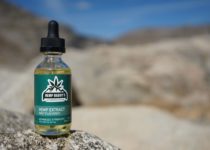How to Manage Bedsores
Your skin needs good blood circulation to stay healthy. But when you put pressure on the skin for too long, you cut blood flow to your skin which can cause bedsores or pressures sores. People who are bedridden or sitting in a wheelchair are at most risk because they cannot move around as easily. Often times these bedsores can lead to skin infections that need to be treated with antibiotics. So, if you know someone who is bedridden or chair-ridden for a long times, their skin needs to be checked daily. Please make sure to read on how to prevent and treat bedsores. The earlier you catch the bedsore, the easier it will be to treat!
WHAT BEDSORES LOOK LIKE
Bedsores are usually reddish or purplish spots on bony areas of the skin such as the shoulders, tailbone, and heels. Bedsores develop more often on bony spots such as the tailbone since those areas of the skin have the most pressure placed on them when a person sits or lies down. A mild bedsore will be a red or purplish wound. A severe bedsore is deep enough to expose the bone and muscle.
HOW TO TREAT BEDSORES
We shall discuss several way to prevent and treat bedsores. All patients should have their skin checked daily and cleaned if necessary, their bodily position changed regularly, and may need topical medications or debridement to treat more severe wounds. In this section, we shall discuss general care tips such as pain control, treating infections, healthy nutrition, and how to change positions regularly.
Pain Control
- Oral Non-narcotic Pain Relievers: Mild pain can be treated with oral pain drugs like ibuprofen or naproxen that your doctor will recommend to you.
- Oral Narcotic Pain Relievers (Opioids): For more severe pain, your doctor may give you an opioid (narcotic) pain killer.
- Topical Anesthetics: Sometimes your doctor will also prescribe you a topical anesthetic like lidocaine, which is a medicine that will numb and reduce the sensation of pain when applied to the bedsore. There is not much evidence that topical anesthetics work to relieve bedsore pain, but they may bring some relief for a short period of time.
- Topical Morphine Gel or Ibuprofen Foam Dressing: Other topical medications that we researched but are not as commonly used include topical morphine gel or an ibuprofen-releasing foam dressing. Topical morphine gel is available at certain hospitals and ibuprofen foam dressing appears to only be available in the UK. These drugs are not as commonly used in the US because they have only been studied in smaller trials. If you have a deeper bedsore, you will probably need to take oral pain killers instead.
Treat Infections – What are signs of an infection? If a bedsore gets bigger or darker, you see pus or the sore smells bad, or there is a fever, then your bedsore may be infected. The doctor may prescribe an antibiotic cream/ointment or an oral antibiotic medication. Deeper wounds will require intravenous antibiotic medications.
Healthy Nutrition – Adequate nutrition is very important especially if you have a deeper wound ulcer. If you are bedridden or in a wheelchair, you should eat enough protein from foods like meats and beans. If you have difficulty eating, your doctor or nutritionist may have you drink nutrition shakes instead. In very severe cases when you cannot eat, your doctor and nutritionist will give you food intravenously or through a feeding tube. Below is a good video about foods and lifestyle factors that help promote wound healing.
Proper Positioning – The way you lie down is critical to prevent and treat bedsores. We recommend you lie down in a way that does not put pressure on an open wound or bony area such as the shoulders, tailbone, and heels.
- Change positions regularly: It is also important to change positions regularly to allow your blood to circulate around your skin.
- Pillows beneath the calves: If sores are beginning to form on your heels, you may want to place pillows under your calves to take the pressure off of the heels.
- Foam Mattress: A foam mattress or foam overlay can help relieve the pressure on bedsores. We do NOT recommend using a standard hospital foam mattress. It is much too hard on bedsores. Studies have shown higher-specification foam mattresses to be better at preventing bedsores than standard hospital foam mattresses (Cochrane Database 2015).
- Fluid Mattress: The The KCI RIK Fluid Mattress is a non-powered, fluid-based mattress that contains a special viscous fluid that is designed to conform to the shape of bony areas on your body to redistribute pressure equally. Surprisingly, one clinical trial showed non-powered fluid mattresses to be as effective as powered alternating pressure mattresses in preventing bedsores (Br J Nurs. 2003). You can learn more about the KCI RIK Fluid Mattress by clicking here. If you prefer a fluid-based mattress pad that you can place on top of your mattress, click here.
- Air-fluidized Bed: Air fluidized beds are made of millions of tiny air-filled beads and feels as if you are lying on a water bed. These beds are especially good at relieving pressure for big sores. In fact, one clinical trial showed that an air-fluidized bed was more effective than a conventional alternating air-mattress covered by a foam pad (Ann Intern Med. 1987). Below are two videos for an air-fluidized bed. The first video is a patient testimonial of the Clinitron Air-Fluidized bed. The second video is for the Envella Air-Fluidized Bed, which appears to be an updated version of the Clinitron. You can learn more about the Envella by clicking here.
- Low-Air-Loss Bed: Low-air-loss beds use continuous low air pressure to redistribute the pressure off of high pressure areas of the skin. The positive airflow also helps keep the skin cool and dry. One clinical trial of 84 nursing home residents showed that low-air-loss beds were 2.5 times more effective at healing bedsores compared to foam mattresses (JAMA. 1993). A related Air suspension bed, which are similar to low-air-loss beds, are also more effective at preventing bedsores than standard hospital beds (JAMA 1993). Learn more about low-air-loss beds here.
- Alternating pressure mattress: Alternating pressure mattresses are powered support devices that provide pressure redistribution to prevent and manage bed sores. Below is a video of one type of an alternating pressure mattress called the Nimbus Mattress. Alternating pressure support surfaces are also available as an overlay but studies have shown that the mattress saves money in the long run (BMJ 2006). You can learn more about alternating pressure mattresses by clicking here.
Each of these specialized support beds vary in cost (special beds may cost up to several hundred dollars per day to rent) and usually require at least 2 months of treatment to see improvement. If cost is an issue, we recommend a fluid mattress, which we discuss above. You can learn more about the KCI RIK Fluid Mattress by clicking here. If you prefer a fluid-based mattress pad that you can place on top of your mattress, click here.
If cost is not an issue and you have large or multiple bedsores, you may want to consider a more specialized mattress like an air-fluidized bed, which we discuss above. You can learn more about air-fluidized beds by clicking here.
For a great website that compares different powered air-fluidized beds, click here. Check with your medical insurance if they will cover some of the cost.
MEDICAL TREATMENTS FOR BEDSORES
The main treatments for bedsores are debridement and wound dressings depending on the severity of the bedsore. There four stages, with stage 1 being the most mild and stage 4 being the most severe and involving the deepest wounds. Stage 1 and 2 bedsores can be treated with wound dressings, but Stage 3 and 4 wounds may require debridement.
Wound Dressings
A dressing is kind of like a bandage cover to protect the wound, absorb any drainage from the wound, and promote healing. There are two type of bedsores: wet and dry. Treatment will vary depending on the type of bedsore you have.
- Wet bedsores have a lot of fluid buildup, so you should use a dressing made from an alginate or foam which can absorb excess fluid.
- Dry bedsores will benefit from dressings that will rehydrate the area such as dressings made from gauze soaked in saline, hydrogel, hydrocolloid, or transparent polyurethane film.
Debridement:
Debridement is the medical removal of dead or infected tissue so that healthy tissue can heal and grow back faster. Usually large, thick, and deep wounds such as stage 3 or 4 bedsores may require debridement. Your doctor may recommend nonsurgical debridement with biologic ointments such as Santyl ointment or may recommend surgical debridement.
Other Bedsore Therapies – There are a number of therapies that are used by doctors but have less medical evidence: negative pressure wound therapy, hyperbaric oxygen therapy, ultrasound, electrical stimulation, and growth factor topical evidence. We shall discuss below how effective each of these other therapies are.
- Negative pressure wound therapy is a vacuum seal device. The way it works is that a foam is placed inside the bedsore. The negative pressure wound therapy device is placed on top of the foam and uses negative pressure like a vacuum to close and seal the bedsore, decrease swelling, increase blood flow, and repair granulation (connective) tissue. It works just as well as standard wound dressings but requires less maintenance so it is less costly. Patients seem to find comfort with negative pressure wound therapy.
- Hyperbaric oxygen therapy puts a patient in an oxygen chamber where they breathe 100% oxygen for about 2 hours. Most of the studies showed short-term benefit for diabetic foot ulcers, but not long-term benefit. Additionally, in rare cases, some patients experienced seizures or a collapsed lung due to hyperbaric oxygen therapy. Because there is not enough high-quality medical studies showing long term safety and benefit, we do not recommend hyperbaric oxygen therapy. For more information, see the video below.
- Ultrasound: There is not much evidence that low-frequency ultrasound helps treat bedsores. High-frequency ultrasound, however, has shown to reduce the size of bedsores faster than standard treatments. So the bottom line is to ask your doctor about high-frequency ultrasound therapy, not low-frequency ultrasound therapy (the video below for low-frequency ultrasound therapy is only for demonstration purposes).
- Electrical stimulation applies a direct electrical current to pressure sores and has shown to be effective in clinical trials, especially when used in combination with standard care. Make sure you are receiving electrical stimulation such as a high voltage pulsed current, and NOT pulsed radiofrequency energy therapy or electromagnetic therapy. The latter two therapies have not shown great benefit in treating bedsores. The video below goes over electrical stimulation with a high voltage pulsed current.
- Other topical Agents: Topical phenytoin, topical sucralfate, and honey do not have enough medical data that they work to speed up the healing of bedsores. We recommend Regranex gel (generic name: becaplermin) or platelet-rich plasma because they have the most evidence to treat pressure sores. Regranex gel is effective for diabetic foot ulcers and also works to treat bedsores and pressure sores when combined with good wound care. Platelet-rich plasma plus hyaluronic acid decreased pressure ulcers by almost 50% after 36 days in one clinical trial (Biol Res Nurs. 2015).


